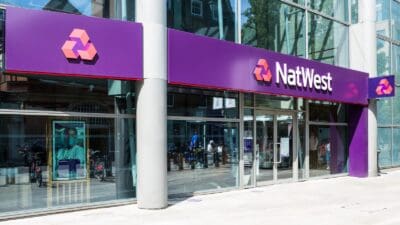HSBC
HSBC (LSE: HSBA), which trades at 11.2 times its expected 2015 earnings, may seem cheap at first glance; but the bank has a long way to go in reducing its high cost structure.
In its recently announced plan, the bank intends to cut up to 25,000 jobs, shrink the size of its investment bank by a third and sell its operations in Brazil and Turkey. This should bring in cost savings of about $5 billion annually, and will cost the bank up to $5 billion over the next two years to implement the plan.
The bank also intends to separate its UK retail banking business and drop the ‘HSBC’ brand from its high-street branches. But what does this mean for the self-proclaimed “world’s local bank”?
Should you invest £1,000 in National Grid right now?
When investing expert Mark Rogers has a stock tip, it can pay to listen. After all, the flagship Motley Fool Share Advisor newsletter he has run for nearly a decade has provided thousands of paying members with top stock recommendations from the UK and US markets. And right now, Mark thinks there are 6 standout stocks that investors should consider buying. Want to see if National Grid made the list?
This is not the first time management has tried to tackle its high cost base. Since the financial crisis of 2007/8, the bank has retreated from peripheral markets and scaled back its retail banking business, but to no avail.
Because of higher regulatory and compliance costs, its cost efficiency ratio rose to 67.3% in 2014. Much more radical change is needed to make the bank cost competitive. And so far, we are not seeing enough of this.
Standard Chartered
Standard Chartered’s (LSE: STAN) exposure to commodities lending has been particularly problematic. Unlike HSBC, which continues to see loan impairments decline, Standard Chartered has had to dramatically raise its loan loss provisions. Loan losses could rise further, as commodity prices remain low, particularly for oil, coal, iron ore and copper. This has fuelled concerns about the bank’s capital adequacy and whether fresh equity would needs to be raised.
Longer-term prospects for the bank remain very attractive though. Its focus on Africa and Asia, two of the most attractive regions in the world (where financial markets are rapidly developing and where economic growth is fastest) makes Standard Chartered particularly appealing.
The uncertainty overhang of a rights issue will keep its valuation low. Investors will hold back from investing in Standard Chartered for fear of a capital call and/or potential dilution. So, it will probably be better to wait until after Standard Chartered announces its capital raising plans before investing in the bank’s shares.
Aberdeen Asset Management
Aberdeen Asset Management’s (LSE: ADN) focus on emerging markets led to significant net outflows for the fund manager over the recent years. However, with emerging markets nearing the bottom of the cycle, the fund manager is its seeing gross new business inflows recovering, even as net outflows continues.
Although investor sentiment may continue to be weak for emerging markets, it may be bottom out soon. The rally in Chinese equities in recent months and relatively stable markets across Asia may improve investor sentiment for the region. This will likely benefit Aberdeen Asset Management, which has a particular focus in the region.
Underlying EPS for the first half of its 2014/5 financial year rose 13% to 16.2 pence, and analysts expect the fund manager will see full-year underlying EPS rise 3% for 2015. This implies a very attractive forward P/E ratio of 12.7. With earnings seemingly past the worst of it, now might be the right time to buy shares in Aberdeen Asset Management.







